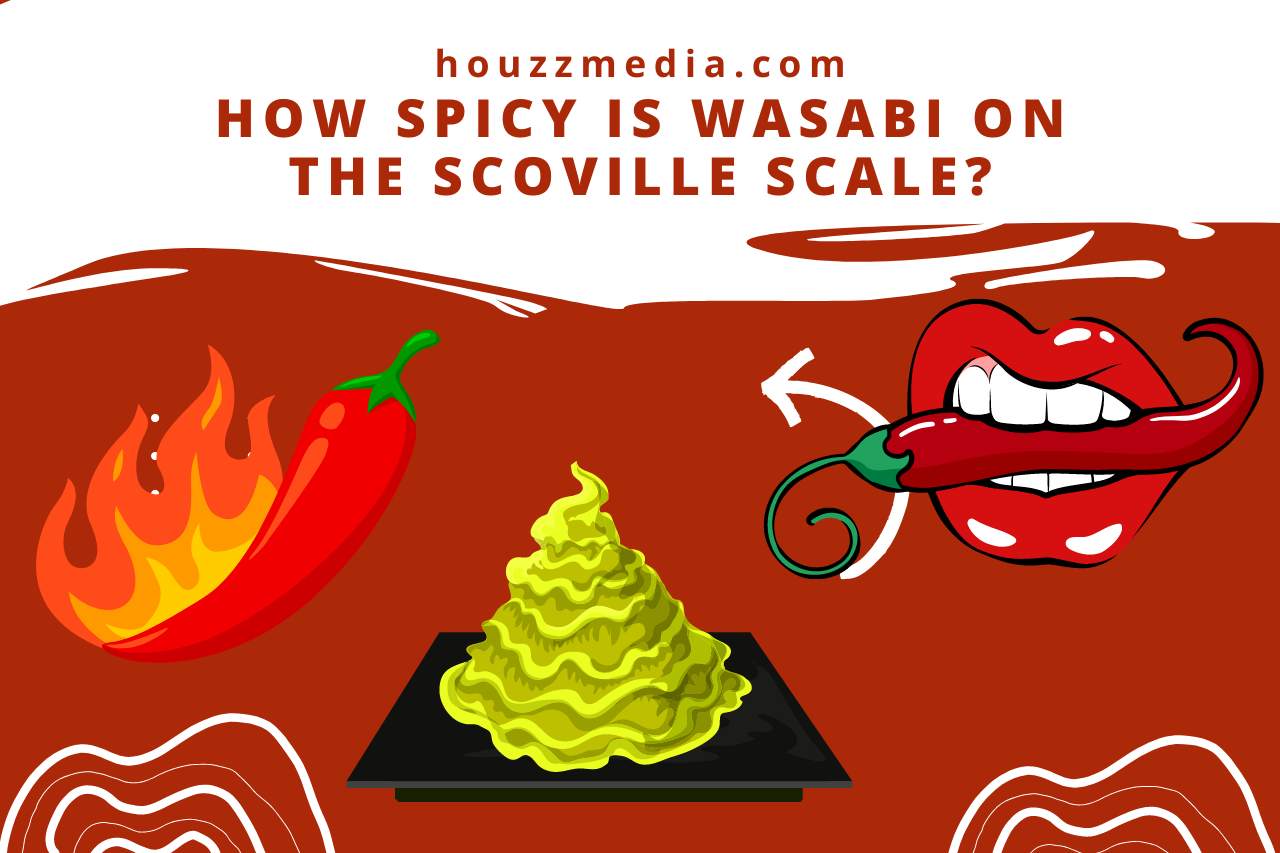How Many Scoville Units is Wasabi? Unlocking the Spicy Secrets!
The hot wasabi served with your delectable sushi dish is well-known for anyone who has at some point eaten Japanese food. Wasabi is a crucial dipping sauce for every Japanese meal and generally goes well with soy sauce. How many Scoville units is wasabi? Wasabi is a root, not a pepper. Hence it cannot be given a Scoville rating because peppers are measured using the Scoville Scale. Nevertheless, many people who are familiar with peppers have compared wasabi’s searing sensation to that of the potent habanero pepper, which has a Scoville Score that fluctuates between 100,000 to 350,000 and is rather potent.
What Determines the Spiciness of Wasabi?
A substance found in the wasabi plant known as allyl isothiocyanate (AITC) is the main factor for determining its hotness. The AITC cells are split when wasabi is grated or crushed, allowing the substance to escape.
The wasabi flavour’s spiciness and intense aroma have been caused by AITC. The spiciness of wasabi increases with its freshness. After grating, the AITC content and spiciness steadily decrease as time goes on.
The environment in which wasabi is grown can directly affect how hot it is. Elements like temperature, light, and soil quality can determine the concentration of AITC in the plant.
The spiciness of wasabi can vary depending on how it goes through processing and cooking. For instance, the grating method impacts how much AITC is released. Compared with powdered or roughly grated varieties, wasabi tends to be hotter.
Is Wasabi-measured in Scoville Units Like Other Spicy Foods?
Unlike other spicy dishes, the intense flavour of wasabi cannot be commonly quantified in Scoville units.
Determined by the number of capsaicinoids present, the Scoville scale evaluates the degree of hotness or spiciness of chilli peppers and items containing chilli peppers.
It is inaccurate and meaningless to measure the spiciness of wasabi in Scoville units since wasabi and chilli peppers possess different chemicals responsible for their spiciness. Wasabi’s spiciness is often quantified qualitatively as opposed to quantitatively.

How Spicy is Wasabi on the Scoville Scale?
The Scoville scale is not frequently employed to gauge the heat of foods like wasabi. Based on the number of capsaicinoids present, the Scoville scale rates the heat or spiciness of chilli peppers and items containing chilli peppers.
Wasabi includes allyl isothiocyanate (AITC), which gives it its pungent flavour but differs from capsaicinoids in chemical composition. Given that it is calibrated, especially regarding capsaicinoids, the Scoville scale cannot accurately assess the spiciness of foods like wasabi that are not made with chilli peppers.
As a result, wasabi does not have a fixed Scoville rating. One must remember that wasabi’s spiciness is frequently subjectively stated because it can vary depending on elements, including freshness, preparation technique, and personal sensitivity.
What does Wasabi Taste Like?
Wasabi has a distinct and exceptional flavour. It is frequently described as savoury, fiery, and spicy, but with a unique personality derived from chilli peppers. Wasabi has a crisp, clear flavour with a faint, refreshing sweetness.
When you eat wasabi, you probably feel a tremendous heat at first, but it goes away soon, leaving a lingering, delightful spiciness in your mouth. A complex flavour profile containing traces of mustard, horseradish, and earthy aromas goes along with this spiciness.
The Wasabia japonica plant’s rhizome is used to produce authentic wasabi, which has a delicate and complex flavour.
It is treasured as a condiment in Japanese cuisine, especially for sushi and sashimi, where it enriches the flavour profile as a whole and harmonizes with the flavours of the seafood.
Can the Spiciness of Wasabi Vary Depending on Its Preparations and Freshness?
Wasabi’s heat can change depending on how it is prepared and how fresh it is. The degree of heat in wasabi depends on how it is made. For instance, when wasabi is grated, crushed, or ground, the flavour is released, and the cells storing the spicy ingredients are shattered.
More surface area is exposed with finer grating or crushing, which results in a more potent spice. Wasabi that has been processed coarsely grated or chopped may be less potent. When wasabi is grated, the spice level might increase as it is exposed to the air.
When exposed, the volatile substances dissipate, and the zest eventually disappears. It is better to consume freshly grated wasabi as soon as possible or closely cover it to reduce exposure to air to maintain the spiciness.
Are there Alternative Methods to Measure the Heat Level of Wasabi?
There are plenty of alternative ways to gauge how hot wasabi is, particularly with its acrid ingredient, allyl isothiocyanate (AITC). These techniques can offer quantitative or semi-quantitative estimates of the spiciness of wasabi, even though they might not have been as widely used or standardized as the Scoville scale for chilli peppers.
Enzymatic assays can gauge the activity of the enzymes responsible for producing AITC. An estimate of the AITC concentration and, thus, the degree of heat can be determined by assessing the enzymatic activity.
The concentration of AITC in a sample of wasabi can be determined using HPLC. It may be done to determine the spiciness indirectly by separating and quantifying the AITC component. This approach offers a quantitative evaluation.
The spicy flavour of various wasabi samples can be subjectively assessed through sensory analysis by expert panellists while not being an objective indicator of the heat intensity. Highly skilled individuals can taste the spice and evaluate its quality and intensity to create a qualitative rating.
How does the Spiciness of Wasabi Compare to Other Common Chilli Peppers?
Wasabi is frequently considered to have a different heat level than other chilli pepper varieties. While both substances have different chemicals that contribute to their spiciness, they can give off a hot and intense sensation.
The capsaicinoids in chilli peppers, especially capsaicin, give them their heat. Chilli peppers are noted for their long-lasting burn, a wide range of heat intensities, and slow heat build-up. From mild kinds like bell peppers to highly spicy varieties like the Carolina Reaper or Trinidad Moruga Scorpion, which can achieve exceptional levels of heat on the Scoville scale, chilli peppers can have varied degrees of spiciness.
It is arbitrary to compare the heat of wasabi with chilli peppers because everyone possesses distinct taste preferences and sensitivities.
Furthermore, it should be noted that wasabi cannot be measured using the Scoville scale, typically used to evaluate the heat of chilli peppers. This is the case because wasabi contains various components contributing to its spiciness.
Watch this one,
Video Credits – 3-Minute Explanation
You May Also Like






